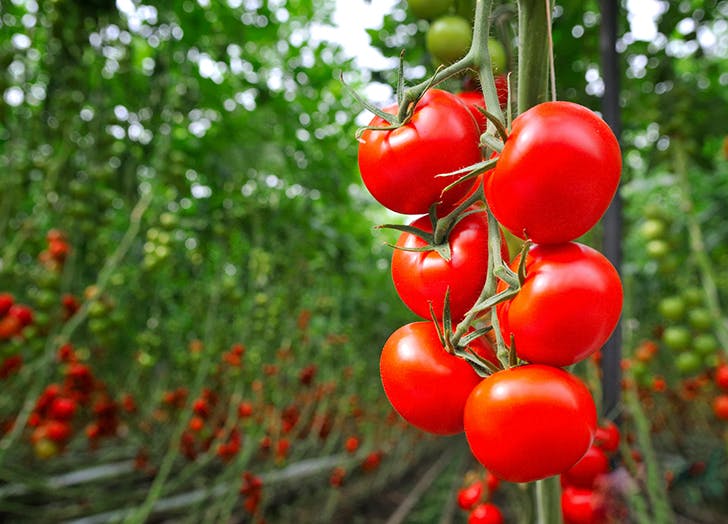Read this article and go ahead and plant tomatoes at home, in your apartment or in the office, you will see that it is very simple and only requires a little time and a lot of observation to enjoy some delicious tomatoes from your garden or from your pot.
Wait for the beginning of spring and sow your seeds, there are those who advise sowing tomatoes in the months of February or March; follow the instructions that we detail and you will not have any kind of problems, in four or five months you will be able to eat your tomatoes and beyond the quantity, which will be linked to the surface to be cultivated, the experience is the most pleasant and the sensation of eating your tomatoes themselves is unique.
Our instructions are designed for planting in a pot but it is totally valid for an orchard or a garden, you only need a little land to sow or plant if you want to start from a plant instead of seeds.
The tomato plant belongs to the herbaceous, once it bears its fruits, most of it dies, only the root lives but it is advisable to discard it and cultivate the next harvest from scratch.
Some properties of the tomato, it provides a large number of antioxidants, efficient in fighting cancer, maintains intestinal health, helps eyesight, improves the condition of the skin, fights urinary infections, has large amounts of vitamins and minerals such as vitamin C, vitamin A and vitamin K; potassium and iron.
I hope that soon you can taste the flavor of your tomatoes and feel that special pleasure; enjoy some recipes with this tasty fruit and encourage you to continue planting more tomatoes, other varieties or even some other vegetable or vegetables. We will help you.
What do you need to plant tomatoes?
- Seeds or plants.
- Pot or orchard.
- Land.
- Organic fertilizer.
- Fertilizer 5-10-10.
- Sun.
- Water.
- Cane or stake
- Raffia.
- Manual pruning shears.
- Gloves.
- Watering can.
Instructions for planting tomatoes
- Decide if seeds or plants, once decided to see the tomato variety, and if they are determinate or indeterminate, the former are recommended for pots because they are from one harvest or season, the latter are for constant growth, preferably for orchards and large spaces; Some varieties suitable for our interest are Cherry, Roma, hanging or guard or pen jar or Majorcan, Raff, Gold or Commodore, Gig antes, Celebrity, Big boy, Sequent Verdi, Nadine, Mar globe and the black Komati.
- Prepare the sowing soil, we must place in a sample pot that must have a minimum depth of 20 cm. place the organic or chemical fertilizer mixed with the soil and on top, about 8 cm. only soil so that the plants do not touch the fertilizer. The recommended fertilizer 5-10-10(weight of nitrogen, phosphorus and potassium). The ideal PH is approximately 6.5.
- If it is sowing you can place the 2 or 3 seeds at 2 cm. deep and about 20 cm apart. Of other 2 or 3. If they are plants they must have a separation of 50 cm. bury the roots well.
- Irrigation, it is preferable in the morning and abundantly, the plant feels comfortable in well-drained soils and the lack of water affects the growth and health of the plant, but care must be taken not to overdo it and flood it regularly because we would cause risk of putrefaction. It is not advisable to wet the leaves.
- Sun, this plant needs a lot of sun, and high temperatures between 25ºC and 30ºC, the cold kills them.
- Stake or cane driven into the ground to tie and support the plant with raffia as it grows so that its branches and stems are subject and the plant grows well and upwards; and also so that its leaves and fruits do not have contact with the ground to eliminate diseases and rot.
- Pruning, it is advisable to cut the lateral shoots to allow the maximum penetration of light possible and by eliminating suckers the harvest will be improved.
- Once the plant is growing, after 2 months check that it is well supported, that the leaves and fruits do not come into contact with the ground, remove all the yellowed leaves and observe any anomaly or sign of a plague.
Tips for planting tomatoes
Take into account the sun, this plant needs high temperature and direct sun for about 8 hours a day.
The cold affects it a lot, a temperature of 0º kills them, and it must be protected from frost. Lots of water preferably in the morning and on the ground, not on the plant.
The tomato plant can be affected by spider mites, whiteflies, aphids, Lepidoptera caterpillars, soil worms and some more.
A constant visual inspection of the plant serves to determine the level of the pest and its natural enemies, as a basis for choosing the treatment.
Use pesticides sparingly and safely, only when you notice a large number of harmful insects (you don’t have to totally eliminate a “pest”, but keep it at normal levels).
Observe if it presents a lack of nutrients with the following symptoms,
Nitrogen: weak and green-yellow leaves.
Magnesium: white and yellow leaves with brown spots, can be corrected by spraying magnesium sulfate.
Phosphorus: it is noticed in the flowers, they dry out prematurely, they take time to fully form and open, and it is solved by fertilizing after the flowering of the tomatoes with superphosphate of lime.
Potassium: the shape and color of the leaves, they bend at the edge, remain small and yellow to gray. If the lack of potassium continues, they reach the rest of the plant.


















